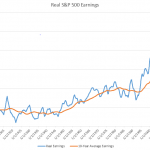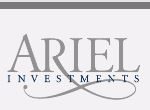The disaster of Third Avenue Focused Credit (TFCVX) rolls on. For those not following December’s drama, TFCVX offered the impossible: it would invest in illiquid securities (that is, stuff that couldn’t be sold at the drop of a hat) but provide investors with daily liquidity (that is, act as if portions of the portfolio could be sold at the drop of a hat). That worked fine as long as the market was rising and no one actually wanted their money back, but when the tide began to go out and investors wanted their money, the poop hit the propeller.
Third Avenue couldn’t raise the cash to meet investor withdrawal demands. Instead, they froze withdrawals from the fund (an unprecedented development) and had their irascible president David Barse escorted from the building by security. Since then, they’ve been trying to sell off the portfolio piecemeal, passing along dribs and drabs to shareholders as funds become available. The frozen shareholders have so far received two distributions, $0.59/ share on December 16 and $0.54/share on June 14, 2016. That’s $1.13/share against a last pre-freeze NAV of $6.48.
Third Avenue is now looking to off-load the fund on someone else, either through outright sale or through some sort of co-management agreement (“Third Avenue weights sale of high-yield fund,” Wall Street Journal, 07/28/2016). That report immediately raises two questions:
- Who would want it? And,
- What would they be buying?
Third Avenue is paying the investment bank Houlihan Lokey Inc.to find an answer to the first question. The Journal’s two speculations are distressed securities investors or firms “who want to get into the mutual-fund business” (though that seems a bit like trying to sell the Titanic to firms “who want to get into the shipping business”).
The nominal answer to the second question is a fund “which had assets of $592 million.” Sadly, that answer is arrant nonsense. A security is worth precisely what a buyer will pay for it and the evidence at hand is that Third Avenue can’t find anyone to pay anything like that amount. If they could, they wouldn’t be trying to sell the fund, they’d simply sell the securities in the fund.
So where does the $592M come from? The explanation comes in Third Avenue’s latest shareholder report. They dutifully report that the fund has “Total Investments #” of $585,734,004. At the bottom of the table, the hashtag gets explained: “# Total cost.” Translation: the fund is holding pieces of paper for which they paid $585 million.
Morningstar offers up one silver lining. Their estimate of shareholders’ Potential Cap Gains Exposure is -201.68. Translation: for $1 you have invested, you might reap $2 in tax losses.











